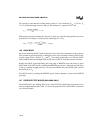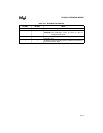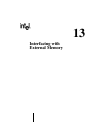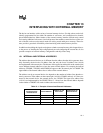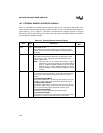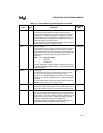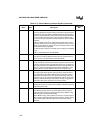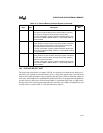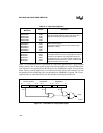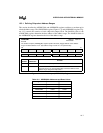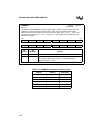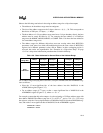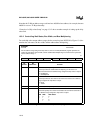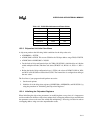
8XC196NP, 80C196NU USER’S MANUAL
13-4
EA# I External Access
This input determines whether memory accesses to special-purpose
and program memory partitions (FF2000–FF2FFFH) are directed to
internal or external memory. These accesses are directed to internal
memory if EA# is held high and to external memory if EA# is held
low. For an access to any other memory location, the value of EA# is
irrelevant.
EA# is not latched and can be switched dynamically during normal
operating mode. Be sure to thoroughly consider the issues, such as
different access times for internal and external memory, before using
this dynamic switching capability.
On devices with no internal nonvolatile memory, always connect EA#
to V
SS
.
EA# is not implemented on the 80C196NU.
—
HLDA# O Bus Hold Acknowledge
This active-low output indicates that the CPU has released the bus
as the result of an external device asserting HOLD#.
P2.6
HOLD# I Bus Hold Request
An external device uses this active-low input signal to request control
of the bus. This pin functions as HOLD# only if the pin is configured
for its special function (see “Bidirectional Port Pin Configurations” on
page 7-7) and the bus-hold protocol is enabled. Setting bit 7 of the
window selection register (WSR) enables the bus-hold protocol.
P2.5
INST O Instruction Fetch
This active-high output signal is valid only during external memory
bus cycles. When high, INST indicates that an instruction is being
fetched from external memory. The signal remains high during the
entire bus cycle of an external instruction fetch. INST is low for data
accesses, including interrupt vector fetches and chip configuration
byte reads. INST is low during internal memory fetches.
—
RD# O Read
Read-signal output to external memory. RD# is asserted only during
external memory reads.
—
READY I Ready Input
This active-high input signal is used to lengthen external memory
cycles for slow memory by generating wait states in addition to the
wait states that are generated internally.
When READY is high, CPU operation continues in a normal manner
with wait states inserted as programmed in CCR0 or the chip-select
x
bus control register. READY is ignored for all internal memory
accesses.
—
Table 13-2. External Memory Interface Signals (Continued)
Name Type Description
Multiplexed
With



